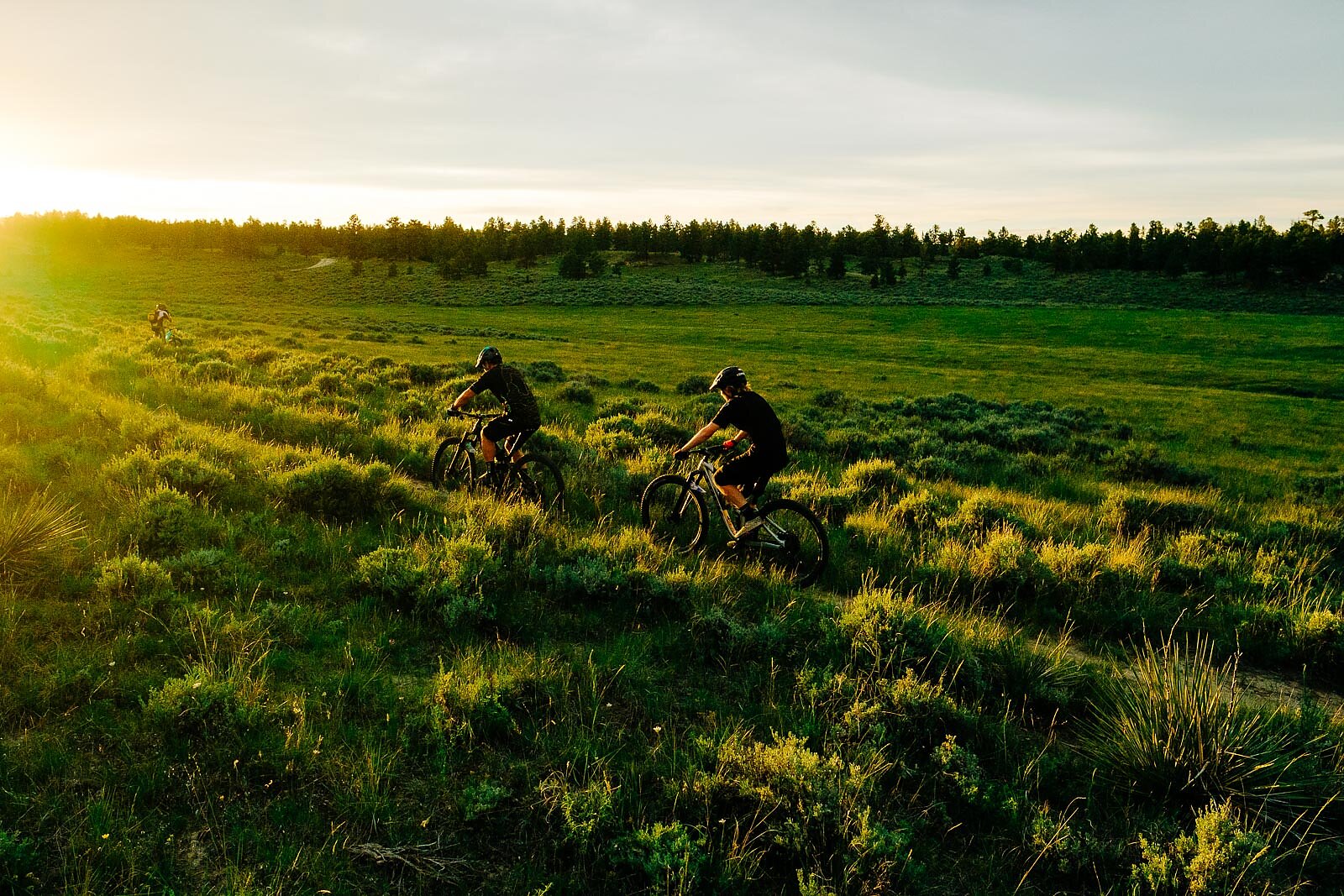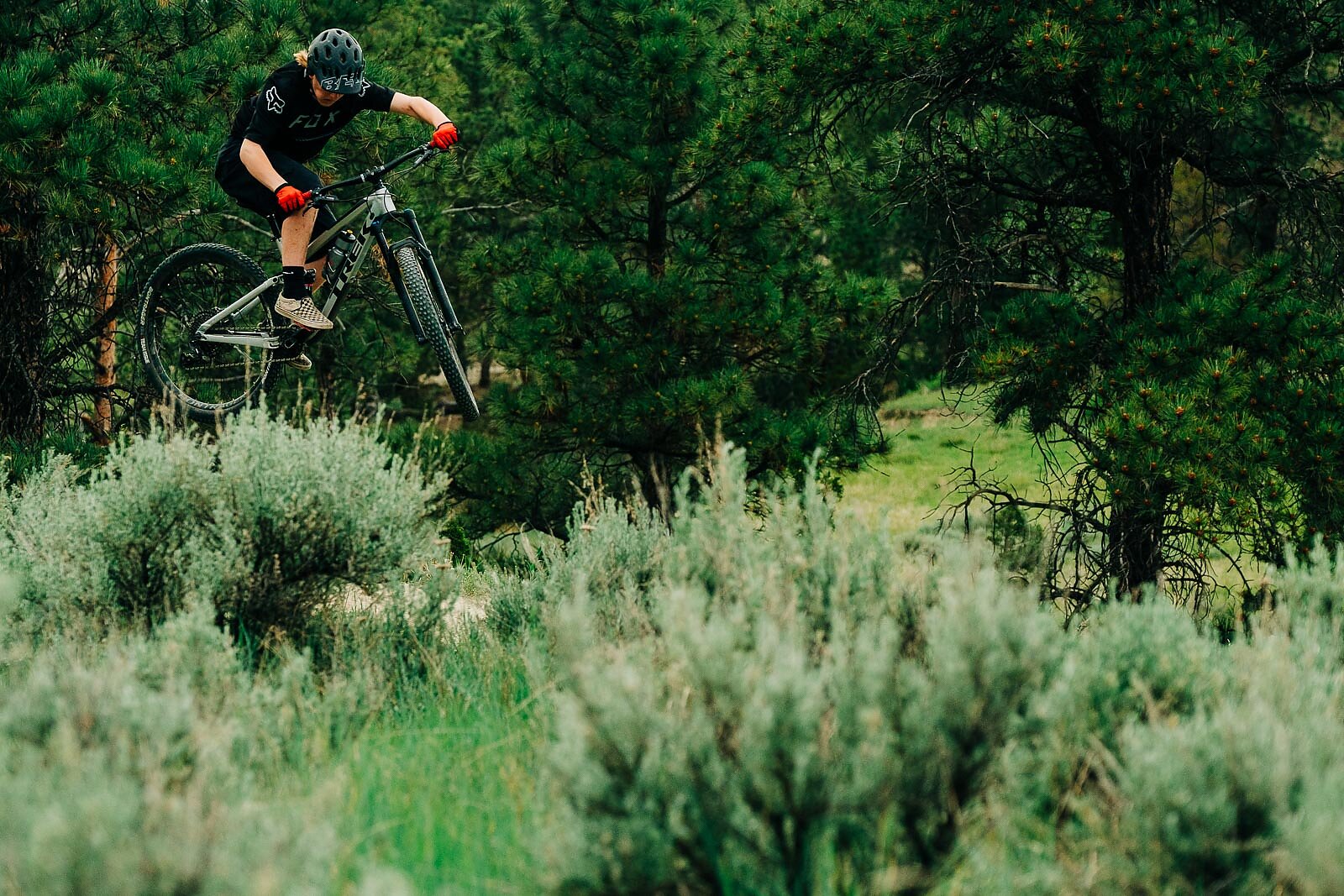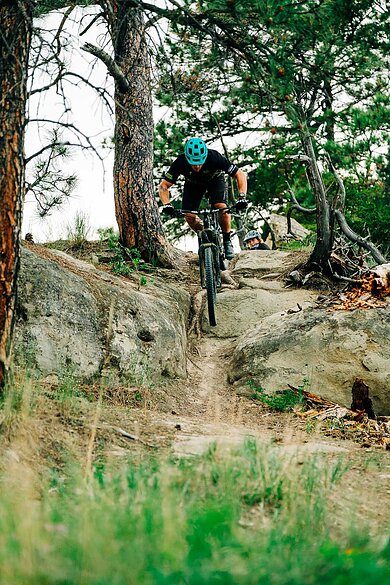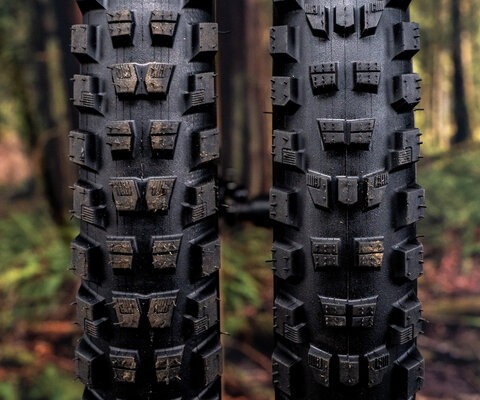
Done Right A Better Way Forward in Billings, Montana
Words and Photos by Aaron Theisen
In southeastern Montana, things have a way of springing up overnight.
Billings, the state’s largest city, earned the nickname “Magic City” for the speed at which it seeded itself around the Northern Pacific Depot in the early 20th century. Like many stories out here, this one begins with a group of hardy souls scratching something new out of an unforgiving landscape. And like many stories of community trail systems, it nearly ends when land managers bust the builders of unsanctioned trails.
A decade ago, a group of guerrilla builders discovered the Acton Recreation Area about 18 miles north of town. With their eyes set on freeride lines on the rimrock and pine woodland, they began building gap jumps and sketchy wooden ramps on the cattle trails that wound through the 3,800-acre area.
“There were these massive, steep, huck-yourself lines out there—the kind where you hope you land in the right spot and roll away from it,” local rider Mckay Martwig says.
It wasn’t long before the Bureau of Land Management, which oversees the recreation area, caught wind of the illegal features. Tim Finger, the recreation manager at the time, confronted the “trail bandits,” as they came to be known. But this is where the story diverges from most.
After issuing citations, Finger told the builders there was a better way forward. His BLM career until that point had taken him throughout the American West, and he had shepherded several groups through the trailbuilding process. He also knew the Billings office had areas dedicated to offroad vehicles, equestrians and moto hill climbs. Mountain bikers could have their zone, too. They just needed to ask.
Unlike many trail systems that come kicking and screaming into the light of day after years—or decades—of hand slapping and finger pointing, Acton began with a process so well thought out it could have been a Schoolhouse Rock! song on how to build a trail system.
About this time, Dean Cromwell, owner of The Spoke Shop in Billings, began asking state and federal government representatives in the area where mountain bikers could develop a trail system. Acton Recreation Area came up again. Cromwell, who sat on the board of Pedal United, the local bike club, ran with it.
The BLM handled all the environmental assessment work, while Cromwell and Jason Hudson of Pedal United did the footwork of plotting potential trails. The process was slow, with several years passing from the initial meetings to the first turn of the shovels. But it had its advantages, aside from legal standing.


“The big thing with legal trail systems that doesn’t happen with rogue building is we’re able to get money,” says Jenny Alexander, the outdoor recreation planner at the Billings office.
Because the BLM and the International Mountain Bicycling Association have worked together extensively, the two entities have a Memorandum of Understanding that facilitates funding.
Once Pedal United was recognized as an IMBA chapter, it was able to apply for funding to buy tools for trail maintenance and supplies for campsite construction, as well as to hire seasonal youth work crews for trailbuilding.
Dave Lefevre, field manager at the Billings office, points out that Pedal United, rather than the BLM, funded the project. “And whatever the dollar amount that was spent, it was probably tripled by the partners with what they put in,” Lefevre says. This included the design and construction of cattle guards by the local high school chapter of the Future Farmers of America.
Now there are nearly 30 miles of trails, from the big berms, step-ups and rock gardens of Roller Coaster and Red Line to a one-mile kids’ loop where parents can see the whole trail from the trailhead. And Cromwell and Hudson continue to scout new trails.
Much like that magic baseball diamond built in an Iowa cornfi eld, Acton is being discovered. Riders from Bozeman, Montana, 150 miles to the west, have come seeking spring singletrack while their trails remain snowbound. Road-tripping Canadians on their way to Colorado have made Acton a layover stop. The number of vehicles in the parking lot with out-of-area plates is growing, as is the number of vehicles. On a spring morning this year, Lefevre counted 29 cars at the trailhead.
In 2019, eight years after the Billings BLM offi ce busted the trail bandits, it nominated Pedal United for the agency’s national Volunteer Group of the Year award, which Pedal United subsequently won.
Just as important as national accolades is the approval of the original builders and riders of the rogue trails. Because the sanctioned trail system has been shaped by a local bike club rather than government bureaucracy, riders have, by and large, gotten what they wanted.
“I think Dean and Jason have been really good about saying, ‘This is what we need to do, how do we do it?’” Alexander says. “It might take a little longer, but when you do that, that’s when you get the buy-in and the trust. And when you take the time to do it right, you get the best outcome.”
It may not have been overnight, but the same pioneer spirit that laid train tracks a century ago is cutting singletrack today. There’s a method to the magic this time, but it’s magic, nonetheless.


